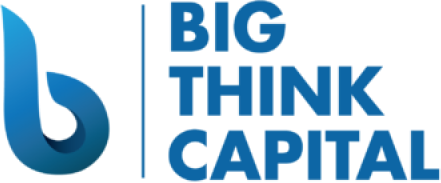Navigating the Challenges of Inflation: Innovative Financial Strategies for Small Businesses in 2025
Estimated reading time: 5 minutes
- Reevaluate Pricing Strategies: Ensure your pricing reflects the value provided while staying competitive.
- Consider Innovative Financing Solutions: Understand the diverse funding options available to manage cash flow effectively.
- Leverage Technology: Automate tasks and utilize software to reduce operational costs and enhance efficiency.
Table of Contents
Understanding the Inflation Landscape
The past few years have seen inflation rates rise dramatically, significantly impacting purchasing power and operational costs for small businesses. According to the U.S. Bureau of Labor Statistics, the Consumer Price Index (CPI) surged by 6.5% in 2023 and is projected to stabilize around 3.5% in 2025 (BLS 2023). These changes indicate a long-term shift in consumer dynamics and costs that business owners cannot afford to overlook.
Inflation influences various aspects of business operations, from raw material costs and labor expenses to interest rates on borrowed funds. As prices rise, businesses must consider proactive financial strategies to sustain their growth and ensure they meet their financial obligations without sacrificing quality or service.
Innovative Financial Strategies to Combat Inflation
1. Reassess Your Pricing Strategy
One of the most immediate ways to counteract inflation’s effects is by reassessing your pricing strategy. This involves:
- Conducting Market Analysis: Examine your competitors’ pricing and market positioning. Are you aligned with industry standards, or is there room for adjustment?
- Implementing Dynamic Pricing: Use data analytics tools to monitor costs and demand fluctuations regularly, allowing for flexible pricing that reflects current market conditions.
- Value-Based Pricing: Focus on the value your products or services add to customers, setting prices that reflect the benefits they receive, rather than solely based on costs.
Raising prices can be challenging, but communicating transparently with customers about your need to adjust prices due to increased costs can foster understanding and loyalty.
2. Explore Diverse Funding Options
A key aspect of surviving an inflationary environment is maintaining cash flow. In 2025, there are various funding options available for small businesses navigating inflation. These include:
- Working Capital Advances: Ideal for businesses needing quick access to funds to cover immediate expenses.
- SBA Loans: These government-backed loans often come with lower interest rates, providing a stable funding source for your business.
- Merchant Cash Advances: This option allows businesses to access funds based on future credit card sales, providing a flexible funding solution that aligns with revenue generation.
Recognizing which financing product fits your needs can help you manage cash flow effectively during times of inflation.
3. Reduce Costs Through Technology
Leveraging technology can provide significant cost savings that help combat inflation. Consider implementing the following technologies:
- Automated Accounting Software: Reduces the hours spent on tracking finances, freeing up resources for other operations.
- Inventory Management Systems: Help optimize stock levels, reducing excess inventory holding costs and minimizing waste.
- Customer Relationship Management (CRM) Software: This can enhance customer loyalty and retention, maximizing revenue without needing to increase the customer base significantly.
Investing in the right technologies can streamline your operations and mitigate rising costs, providing long-term benefits.
4. Build an Emergency Fund
Establishing a robust emergency fund allows businesses to cover unexpected expenses without compromising daily operations. An emergency fund can help absorb inflationary shocks by ensuring funds are available for essential expenditures when cash flow is tight.
- How Much to Save: Aim for at least three to six months’ worth of operating expenses, adjusted for your industry and unique circumstances.
- Accessing Emergency Funds: Consider setting up a separate business savings account dedicated exclusively to this purpose to avoid the temptation of using the funds for non-emergent expenditures.
Having this financial cushion can provide peace of mind and stability as your business navigates uncertain economic conditions.
5. Strengthen Supplier Relationships
Building strong relationships with suppliers can lead to better terms and reduced costs, which is especially important as prices rise. Strategies to improve supplier relationships include:
- Negotiating Payment Terms: By extending payment terms, your business can retain cash longer and manage expenses more effectively.
- Bulk Purchasing Agreements: If possible, establish agreements for bulk purchases to lock in prices and minimize the impact of future price increases.
- Collaboration: Engage with suppliers to understand their challenges associated with inflation. Collaborative efforts can result in mutually beneficial arrangements.
Maintaining open lines of communication with suppliers allows for potential discounts, favorable payment terms, and insights into market trends.
6. Focus on Customer Engagement and Loyalty Programs
Retaining existing customers is more cost-effective than acquiring new ones. In an inflationary environment, enhancing customer satisfaction and loyalty can significantly impact your bottom line.
- Loyalty Programs: Develop programs that reward returning customers with discounts or exclusive deals, incentivizing them to continue purchasing from your business.
- Customer Feedback: Regularly solicit feedback to improve your offerings and address any concerns, showcasing your commitment to providing value even as costs rise.
- Engagement Initiatives: Use email marketing, social media, and community events to keep your brand top-of-mind and foster a sense of community around your business.
Implementing these strategies can help stabilize revenue streams and build a loyal customer base that sustains your business through economic fluctuations.
Practical Takeaways
- Reevaluate Pricing Strategies: Ensure your pricing reflects the value provided while staying competitive.
- Consider Innovative Financing Solutions: Understand the diverse funding options available to manage cash flow effectively.
- Leverage Technology: Automate tasks and utilize software to reduce operational costs and enhance efficiency.
Final Thoughts
Inflation presents significant challenges for small businesses in 2025, but with the right financial strategies, it is possible to navigate these hurdles effectively. By reassessing pricing, exploring diverse funding options, leveraging technology, building an emergency fund, strengthening supplier relationships, and focusing on customer engagement, business owners can position themselves for success.
At Big Think Capital, we offer tailored funding solutions such as working capital advances and SBA loans designed to help your business adapt to changing economic conditions. Learn more about how we can support you by visiting bigthinkcapital.com or speaking with one of our funding experts. Secure the financial future of your business today.
FAQ
Q: How can I mitigate the impact of inflation on my business?
A: Consider reassessing your pricing strategy, exploring diverse funding options, leveraging technology, and building strong supplier relationships.
A: Consider reassessing your pricing strategy, exploring diverse funding options, leveraging technology, and building strong supplier relationships.
Q: What types of funding are most effective in an inflationary environment?
A: Working capital advances, SBA loans, and merchant cash advances are effective options for maintaining cash flow.
A: Working capital advances, SBA loans, and merchant cash advances are effective options for maintaining cash flow.
Q: Why is customer loyalty important during inflation?
A: Retaining existing customers is generally more cost-effective than acquiring new ones, helping stabilize revenue streams amidst rising costs.
A: Retaining existing customers is generally more cost-effective than acquiring new ones, helping stabilize revenue streams amidst rising costs.






